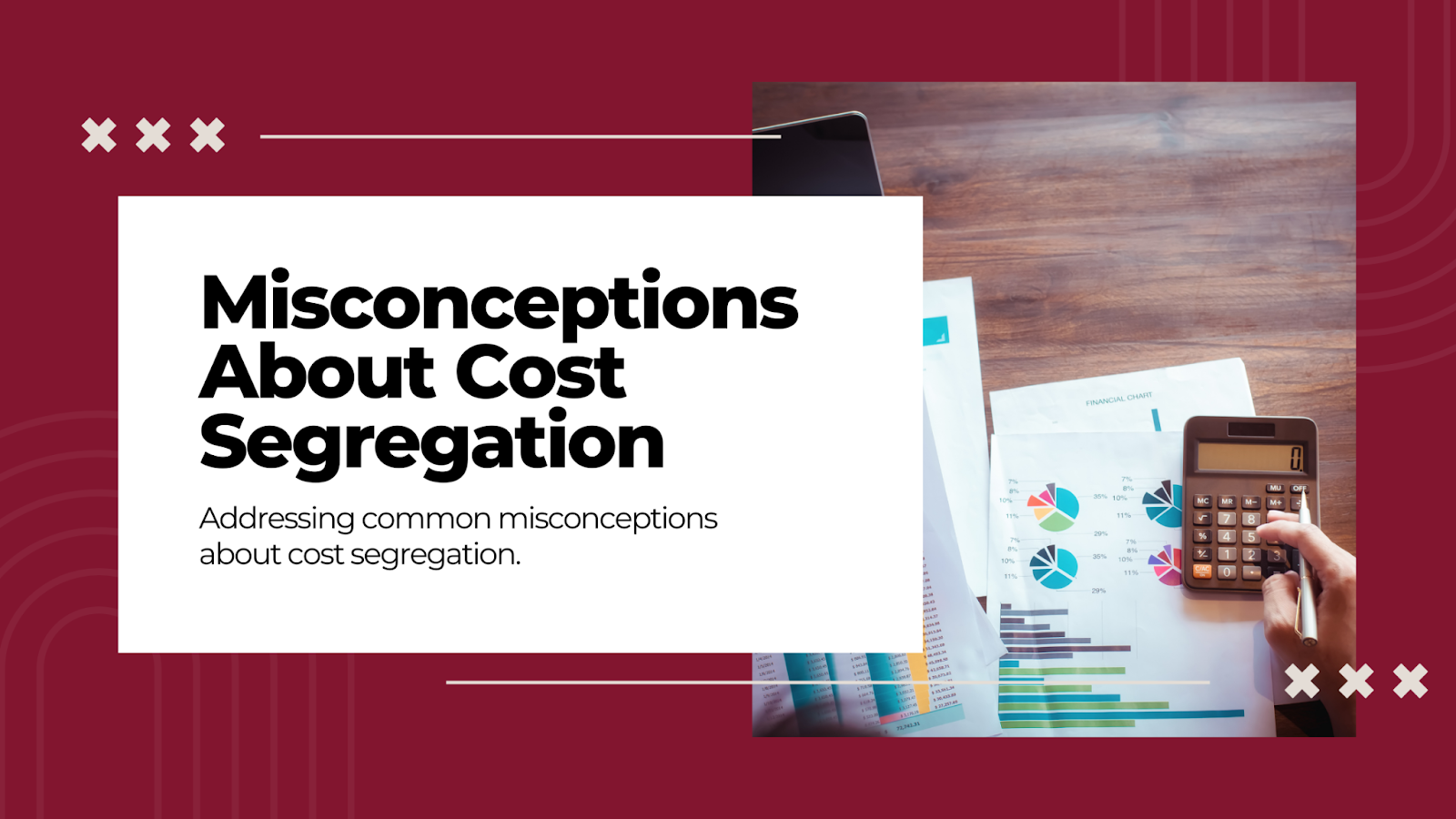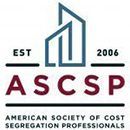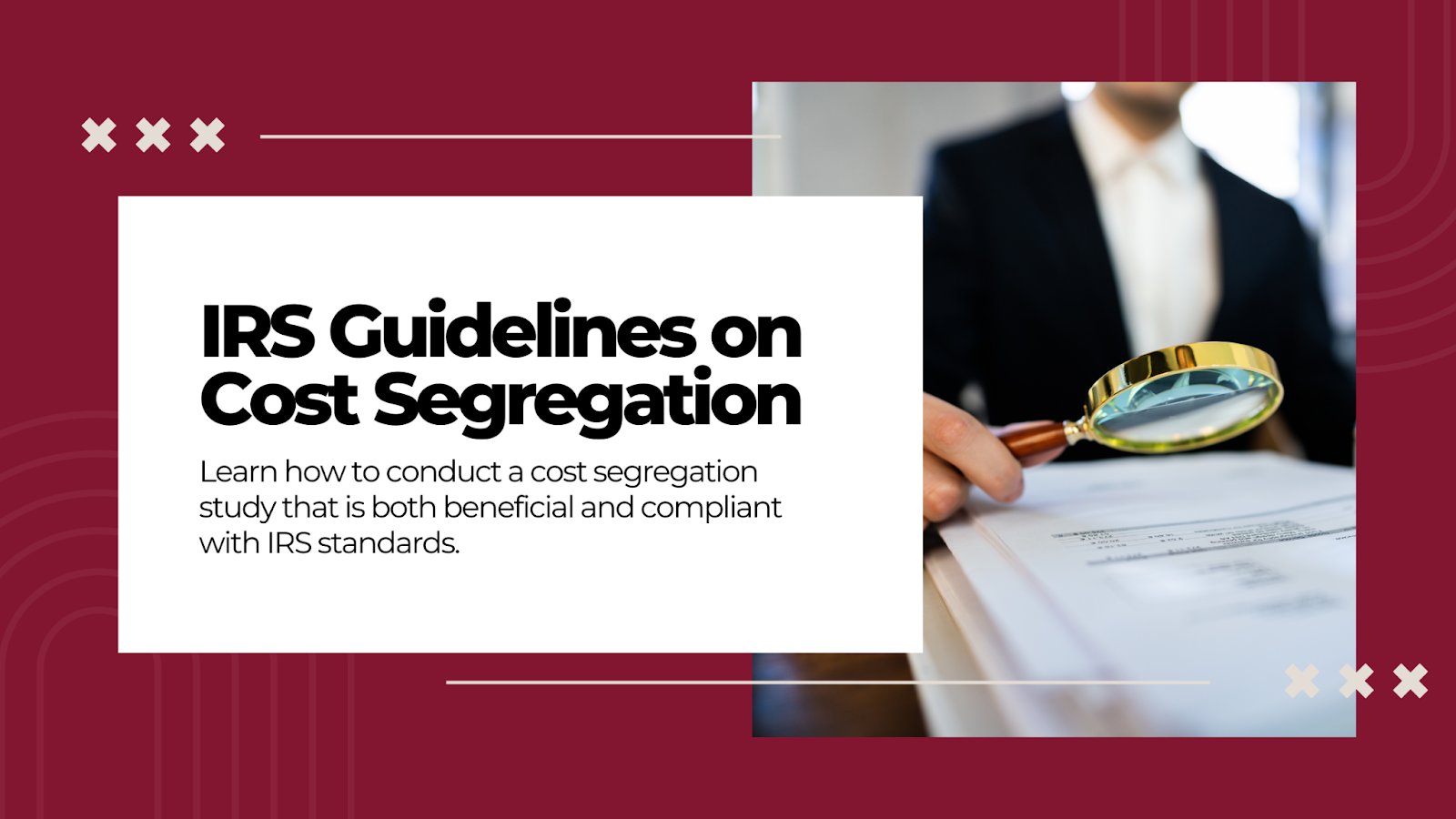Common Misconceptions About Cost Segregation

Understanding Cost Segregation
Cost segregation is a powerful tax strategy that can significantly enhance cash flow and return on investment for various types of property owners. By accelerating depreciation deductions, cost segregation reduces taxable income, lowering overall tax liabilities. Despite its benefits, many misconceptions surround this practice, causing some property owners to overlook or misunderstand its potential.
In this blog, we'll address and dispel common misconceptions about cost segregation. By understanding the realities, property owners can make informed decisions and fully leverage the benefits of cost segregation.
Misconception 1: Cost Segregation is Only for Large Properties
The Myth
Many believe that cost segregation is only beneficial for large, high-value properties, such as sprawling commercial complexes or luxury apartment buildings. This misconception arises from the visibility of high-profile cost segregation cases involving large-scale properties.
The Reality
While large properties do benefit significantly from cost segregation, smaller properties can also see substantial tax savings. Properties of all sizes and types, including single-family homes, small retail spaces, and office buildings, can justify the cost of a cost segregation study through the benefits accelerated depreciation will create.
Example
Consider a small retail space valued at $500,000. The owner conducted a cost segregation study and realized immediate tax savings of $50,000 in the first year alone. This example illustrates that even modestly valued properties can achieve significant financial benefits from cost segregation.
Misconception 2: Cost Segregation is Only for New Properties
The Myth
Another common belief is that cost segregation can only be applied to newly constructed or newly purchased properties. This belief stems from the idea that only new properties have components that can be reclassified for accelerated depreciation.
The Reality
Cost segregation can be applied to both new and existing properties. Owners of older properties can perform a retroactive cost segregation study to catch up on missed depreciation deductions and realize tax savings on prior years' tax returns. The IRS allows for this through a procedure called a “look-back study.”
Example
A small business owner who purchased a retail space ten years ago was able to retroactively apply cost segregation. The study identified components that could be reclassified, resulting in a significant tax refund for the current year. The owner not only benefited from immediate tax savings but also improved cash flow for future operations.
Misconception 3: The Process is Too Complex and Expensive
The Myth
Some believe that the cost segregation process is overly complex and prohibitively expensive, making it impractical for most property owners. This myth persists because the process involves detailed analysis and expert knowledge.
The Reality
While cost segregation studies do require a detailed analysis, they are conducted by experienced professionals who handle the complexity and can provide you with an estimate of the benefits they expect to create prior to the engagement. In this manner, a taxpayer will have an estimate of their Return On Fee and be able to make an informed choice regarding whether or not to engage a Cost Segregation analysis..
Example
An office building owner invested $20,000 in a cost segregation study. The study identified numerous components that qualified for accelerated depreciation, resulting in $2.6 million in tax savings. This yielded an ROI of over 13000%, demonstrating that the benefits far exceed the initial cost.
Misconception 4: It Raises Red Flags with the IRS
The Myth
There is a fear that utilizing cost segregation raises red flags with the IRS, increasing the risk of an audit. This stems from the misconception that aggressive tax strategies are more likely to be scrutinized by the IRS.
The Reality
When conducted by qualified professionals following IRS guidelines, cost segregation studies are a legitimate tax strategy and do not inherently raise audit risks. Proper documentation and a thorough, compliant process are key to avoiding issues. The IRS has well-established guidelines for cost segregation, and adherence to these guidelines ensures that the process is above board.
Example
Numerous property owners have successfully utilized cost segregation without triggering audits. By ensuring documentation and compliance with IRS standards, they have reaped substantial tax benefits without increased scrutiny.
Misconception 5: Cost Segregation is Only for Specific Types of Properties
The Myth
Some believe that cost segregation is only applicable to certain types of properties, such as commercial buildings or rental properties. This belief limits the perceived applicability of cost segregation to a narrow range of property types.
The Reality
Cost segregation can be applied to a wide variety of property types, including residential, commercial, industrial, and even specialized properties like medical offices or manufacturing plants. Any property with distinct components that can be reclassified for accelerated depreciation is a candidate for cost segregation.
Example
A medical office building and a residential apartment complex both benefited from cost segregation. The medical office building identified numerous qualifying components, such as specialized medical equipment installations, while the apartment complex identified reclassifiable fixtures and amenities. Both properties saw significant tax savings, highlighting the strategy’s versatility.
Are Misconceptions Holding You Back?
The American Society of Cost Segregation Professionals (ASCSP) is home to a directory of certified cost segregation professionals who adhere to the highest standards of practice. By visiting the ASCSP's directory, you can find a qualified professional in your area who can guide you through the process and help you reap the full financial benefits of cost segregation.
Learn More About Cost Segregation
The ASCSP offers a network of qualified professionals who specialize in cost segregation studies. ASCSP members adhere to high standards of practice and are equipped with the latest insights and methodologies in cost segregation. We encourage you to reach out to a member of the ASCSP to discuss how a cost segregation study can benefit your specific property scenario.
Whether you are new to property investment or looking to optimize your current assets, cost segregation professionals can provide the expertise you need to make informed decisions and achieve substantial financial gains.
Visit the American Society of Cost Segregation Professionals (ASCSP) website to access our information and resources that can provide you with a thorough understanding of cost segregation and its advantages.



